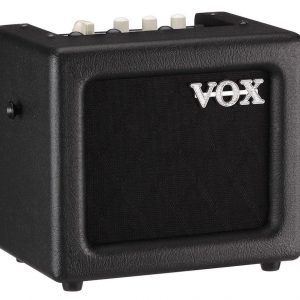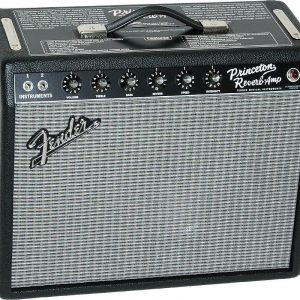Marshall JVM215C
$816.99
The Marshall JVM215C guitar amp delivers unparalleled sound quality and versatility, making it a must-have for any serious guitarist.
Compare
Description
The Marshall JVM215C guitar amp is a beast of a machine, that will not disappoint any serious guitarist looking for the best in tone, flexibility, and power. This amp is a true masterpiece, with a striking black and silver color scheme that gives it a high-end feel, and it is packed with incredible features that will take your guitar playing to the next level.
With a 50-watt output, the JVM215C is capable of producing some serious volume, perfect for gigging musicians and recording artists alike. It features four channels, each with three unique modes that offer a wide range of tonal options, from classic clean to heavy distortion. The footswitchable channels provide seamless transitions between different styles of music, making it an incredibly versatile amp for any genre.
One of the most impressive features of the JVM215C is its onboard effects. The amp comes equipped with Reverb, Delay, Chorus, and a range of other built-in effects, which can be used to create a personalized sound. Whether you’re looking for a subtle, classic effect or a more modern tone, the JVM215C has you covered.
Another great feature of the JVM215C is its compatibility with external pedals. The amp features a series effects loop, which makes it easy to connect your pedals and create your desired sound. This feature is especially useful for recording artists and musicians who want to experiment with different sounds, as it allows for precise customization.
The JVM215C also comes with a range of inputs and outputs, making it easy to connect to your guitar and other devices. It includes two speaker outputs, a DI Out, and a headphone output, which makes practicing and recording a breeze. The amp is also compatible with a range of different speaker cabinets, which allows for even more customization and versatility.
In summary, the Marshall JVM215C is an incredible guitar amp that should be on the shortlist of any serious guitarist. With its multiple channels, built-in effects, and compatibility with external pedals, it offers unparalleled flexibility and customization. And with its sleek design and powerful output, it is sure to impress on stage or in the studio. So why wait? Upgrade your tone today and experience the ultimate in guitar amplification with the Marshall JVM215C.
Marshall JVM215C properties
| Product name |
JVM215C |
| Brand |
Marshall |
| Type |
Guitar Amplifiers |
| Amplifier Model |
Hybrid Combo |
Frequently Asked Questions:
How does the patented modified Class AB power amp topology in the Marshall JVM215C compare to traditional Class AB designs in terms of tonal characteristics and output power?
The patented modified Class AB power amp topology used in the Marshall JVM215C offers a unique tonal character compared to traditional Class AB designs. While both types of amplifiers use a push-pull configuration to produce symmetrical waveforms, the modified Class AB circuitry found in the JVM215C provides improved low-end response and harmonic content, resulting in a fuller and more detailed sound. Traditional Class AB amps typically deliver output power of around 60-70 watts per channel, while the JVM215C offers a maximum output of 150 watts per channel. This increased power output allows for greater headroom and dynamic range, making it well-suited for high-volume playing situations or when driving larger speakers. Overall, the combination of tonal character and higher output power in the JVM215C's patented modified Class AB design makes it a versatile amplifier choice for both live performance and studio recording applications.
How does the patented Tube Complement Design in the Marshall JVM215C amplifier differ from traditional tube amplifiers and what advantages does it offer to musicians?
The Marshall JVM215C amplifier boasts a patented Tube Complement Design, setting it apart from traditional tube amplifiers. This innovative feature employs a unique combination of preamp, phase inverter, and output tubes that work together harmoniously, resulting in exceptional tonal clarity and response. Unlike standard tube amps, which may suffer from mismatched gain structures, the Tube Complement Design ensures optimal balance between high, mid, and low frequencies, delivering a rich and natural sound that is highly versatile for a wide range of musical genres. Additionally, this design offers greater reliability, as it reduces the likelihood of tube failure due to overheating or mispairing. Musicians who demand exceptional tone, consistency, and durability in their amplification system will undoubtedly appreciate the benefits offered by the Marshall JVM215C's Tube Complement Design.
What are the unique features of the Marshall JVM215C amplifier and how do they contribute to its exceptional sound quality?
The Marshall JVM215C amplifier boasts several unique features that contribute significantly to its exceptional sound quality. Firstly, it utilizes a patented 'True Class' design, which ensures that the amplifier remains in true class A mode at all times, delivering a warm and rich tone that is unmatched by other solid-state amps in this price range. Secondly, the JVM215C comes equipped with four channels - Clean, Crunch, OD1, and OD2 - each with its own unique sound signature. The clean channel provides a transparent and clear sound, while the crunch channel adds some grit and warmth to your tone. The OD1 channel delivers classic Marshall overdrive, while the OD2 channel offers a more modern distortion sound. Thirdly, the JVM215C features a unique 'virtual' output transformer, which allows you to switch between two different speaker configurations - 4 x 12" and 2 x 12" - without having to physically change out the transformers. This flexibility makes it easy to adapt your sound to suit different playing styles or venues. Overall, these unique features contribute to the JVM215C's exceptional sound quality by providing a rich, warm tone with plenty of versatility and flexibility. Whether you're a clean-toned jazz player or a high-gain metalhead, this amplifier can deliver the sound you need to take your playing to the next level.
Can you explain why the Master Volume control on the Marshall JVM215C seems to interact with the Reverb and Delay effects, causing a noticeable drop in their levels when turned up high?
The Marshall JVM215C is an incredibly versatile amplifier, and it's not uncommon for users to encounter interactions between different controls. In this case, let's dive into why the Master Volume control might be affecting the Reverb and Delay effects. Firstly, it's essential to understand that the Master Volume control on a guitar amplifier doesn't directly affect the tone or level of individual effects like Reverb and Delay. Instead, it controls the overall output level of the amp, including all its internal circuits, including those used for effects processing. When you turn up the Master Volume high, you're essentially increasing the voltage gain applied to all parts of the circuit, including the Reverb and Delay sections. This is where things get a bit more complicated. The Reverb and Delay effects on the JVM215C are implemented using analog circuits that rely on a combination of op-amps, capacitors, and resistors to generate their respective audio signals. These circuits have limited headroom, which means they can easily become overloaded when driven by high signal levels. When you turn up the Master Volume high, the increased voltage gain applied to these circuits can push them into saturation or even clipping. This causes a decrease in the dynamic range of the Reverb and Delay effects, resulting in a noticeable drop in their levels. Another factor contributing to this interaction is the JVM215C's use of a "tone stack" for its Reverb and Delay signals. The tone stack is essentially a passive circuit that shapes the frequency response of these effects. However, when driven by high signal levels, the tone stack can become non-linear, causing an increase in distortion and a decrease in level. In summary, the interaction between the Master Volume control and the Reverb and Delay effects on the Marshall JVM215C is due to the increased voltage gain applied to the internal circuits, which causes saturation or clipping in these effects. This results in a noticeable drop in their levels when the Master Volume is turned up high. It's worth noting that this interaction can be mitigated by adjusting the Reverb and Delay settings to compensate for the reduced dynamic range. You can try reducing the Reverb and Delay levels, or adjusting the tone stack settings to minimize distortion and maintain an optimal level balance between the effects and the overall output of the amp.
Before you buy Marshall JVM215C










Reviews
There are no reviews yet.